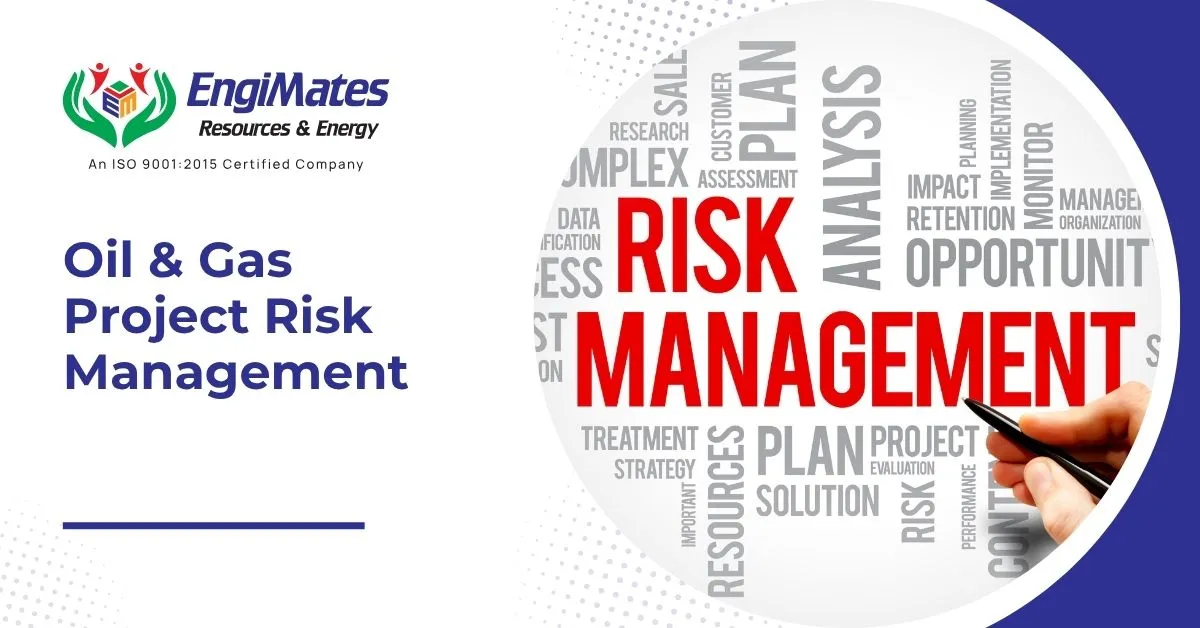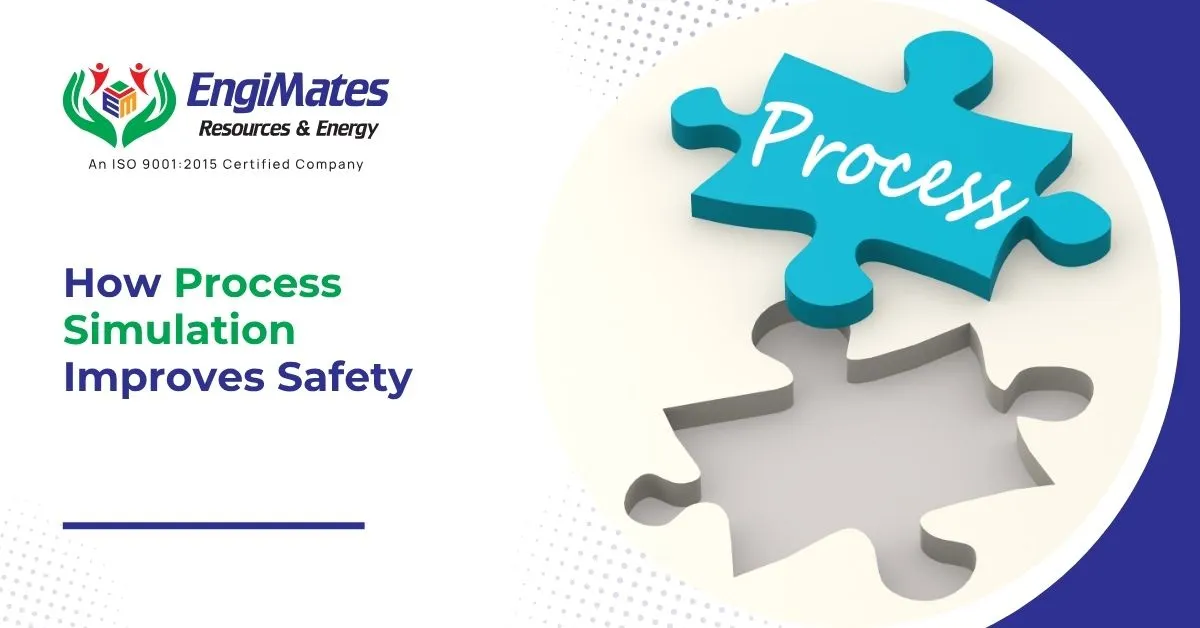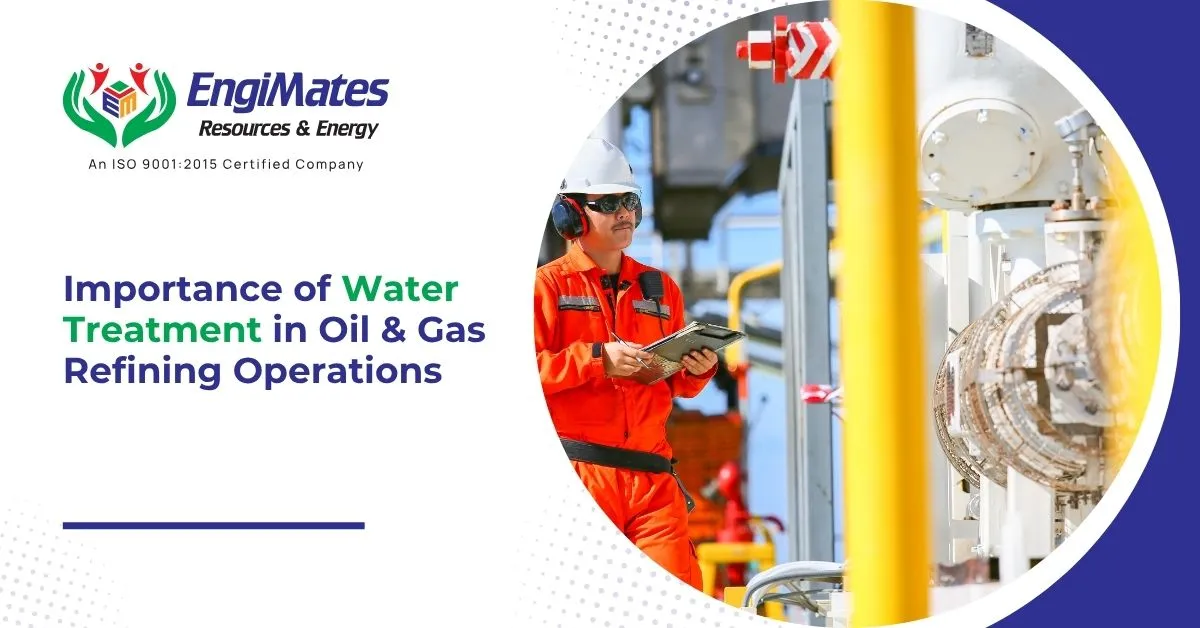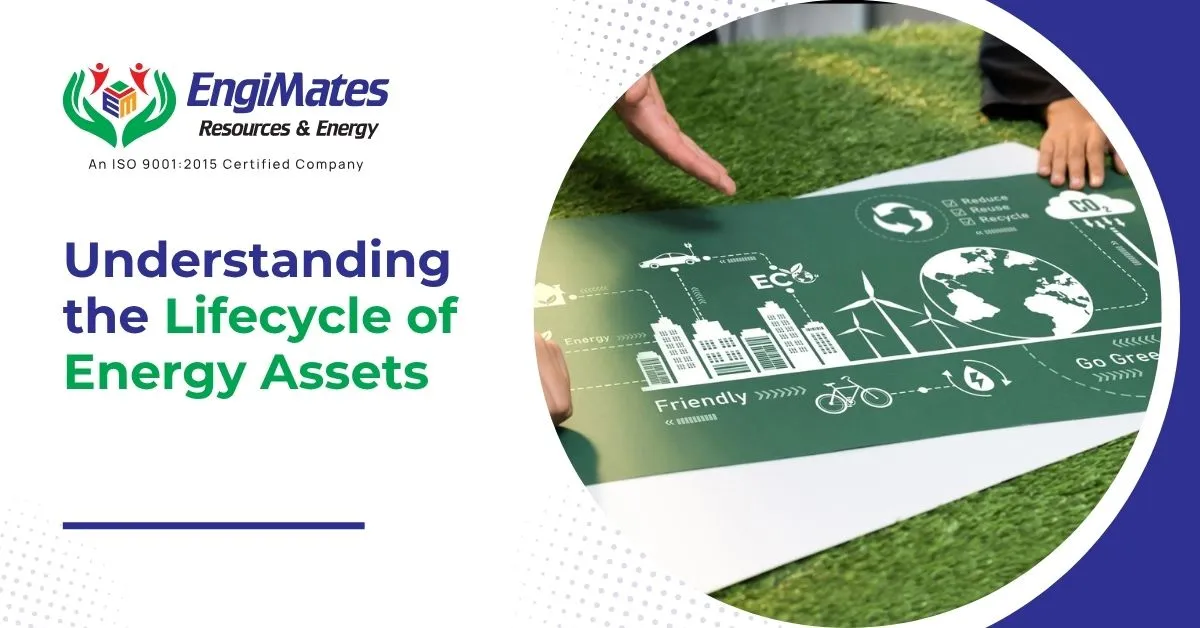Safety is a top priority in the oil, gas, and refining industry, where complex systems…

In the oil and gas industry—where billion-dollar investments meet extreme operating conditions—project risk management is not optional; it’s essential. Whether you’re managing offshore platforms, onshore terminals, pipelines, or refineries, project success hinges on the ability to identify, assess, and mitigate risks across the lifecycle.
At EngiMates Resources and Energy Pvt Ltd, we integrate risk management from feasibility to commissioning—ensuring predictable outcomes in unpredictable environments.
What is Project Risk Management in Oil & Gas?
Project risk management in oil and gas involves systematically identifying potential issues that may affect project objectives—cost, time, scope, safety, or quality—and developing strategies to minimize or control those risks.
Risks may stem from:
- Engineering complexity
- Regulatory changes
- Geopolitical instability
- Contractor performance
- Health, safety, and environmental (HSE) concerns
- Technical failures or scope creep
Types of Risks in Oil & Gas Projects
| Category | Examples |
| Technical Risks | Equipment failures, design flaws, outdated tech |
| Operational Risks | Workforce availability, logistics, commissioning delays |
| Financial Risks | Budget overruns, exchange rate fluctuations |
| HSE Risks | Explosions, spills, hazardous material exposure |
| Regulatory Risks | Permit delays, compliance changes |
| Schedule Risks | Procurement delays, supply chain disruptions |
Benefits of Effective Risk Management
- Minimized Delays and Downtime
Anticipating potential project bottlenecks ensures timely mitigation and keeps project milestones on track. - Controlled Budgets
Risk planning reduces unplanned costs, rework, and emergency spending. - Regulatory Compliance
Helps maintain alignment with API, OSHA, ISO, and local standards, avoiding penalties or shutdowns. - Improved Safety Performance
Identifying HSE risks early protects personnel, assets, and the environment. - Stronger Stakeholder Confidence
Transparency in risk planning builds trust among clients, investors, and regulatory bodies.
Want to reduce uncertainty in your oil & gas projects? Contact us for structured risk management that keeps your project safe, on time, and within budget.
Best Practices in Oil & Gas Project Risk Management
- Early Risk Identification During FEED
Conduct HAZID, HAZOP, and What-If analysis in the conceptual design stage to prevent embedded design flaws.
- Quantitative and Qualitative Risk Analysis
Use tools like Monte Carlo simulation, risk matrices, and sensitivity analysis to measure impact and probability.
- Establish a Risk Register
Maintain a dynamic risk register with categories, root causes, ownership, and mitigation plans. Update it regularly across project phases.
- Integrate Risk with Schedule and Cost Planning
Align risk buffers with project schedules (e.g., Critical Path Method) and build contingency budgets to absorb risk costs.
- Leverage Digital Tools
Use software like Primavera Risk Analysis, Safran Risk, or MS Project with add-ons for real-time risk modeling and monitoring.
- Risk Communication and Governance
Implement structured reviews (e.g., risk workshops, escalation protocols) and empower a dedicated project risk manager.
Why Choose EngiMates for Risk Management?
EngiMates Resources and Energy Pvt Ltd brings domain expertise across:
- Oil & gas, refining, LNG, and petrochemicals
- HAZOP, SIL, and LOPA studies
- Dynamic simulations for critical scenarios
- Interface risk management in EPC projects
- Turnkey support from risk identification to mitigation execution
We embed risk management into every discipline—ensuring projects are not only completed but sustained safely and profitably.
Frequently Asked Questions
Why is risk management critical in oil and gas projects?
Because technical, environmental, and financial risks can significantly impact safety, cost, and project success.
What tools are used for risk management in energy projects?
HAZOP, FMEA, risk registers, Monte Carlo simulations, and specialized software like Primavera Risk Analysis.
When should risk management start in a project?
It should begin during the concept/FEED phase and continue throughout execution and commissioning.
Who is responsible for managing project risks?
While the project manager oversees risk planning, all stakeholders—including engineering, procurement, HSE, and contractors—contribute.
Can EngiMates support risk mitigation during execution?
Yes, our team provides risk workshops, simulations, and mitigation planning tailored to each stage of the project lifecycle.
Conclusion
In the high-stakes world of oil and gas, project risk management is your safeguard against the unexpected. By identifying, analyzing, and mitigating risks across all phases—from design to commissioning—you not only protect your investment but also enhance project credibility and safety.




